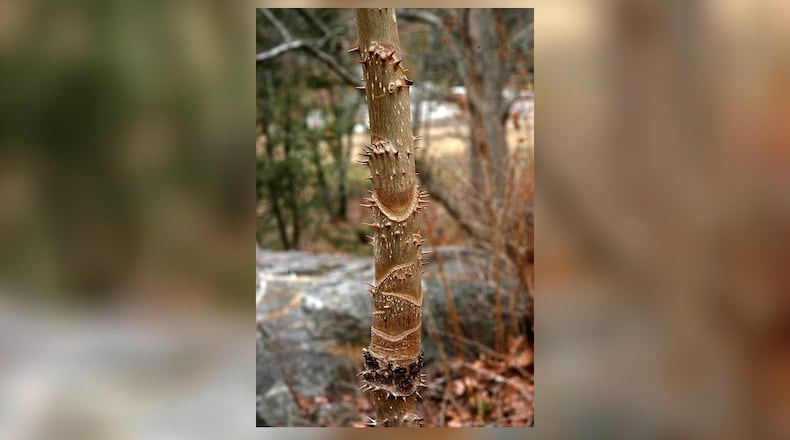I was walking along a creek in Harris County the other day when a greenbrier vine tripped me. To break my fall I grabbed the nearest sapling — which was a mistake.
The sapling was a Devil’s walking stick, a small, native Georgia tree whose trunk is thickly covered with viciously sharp, spiny stems. The fall didn’t hurt me, but the spines sent a piercing pain through my hand. I quickly let go of the sapling, which left my hand a bloody mess.
The pain and bleeding lasted only a minute or two. My wounds proved to be only superficial scratches, and I continued my walk.
But the Devil’s walking stick was on my mind the rest of the day. Preferring deep, moist soil and growing as high as 30 feet, it has an exotic, jungle-like look with its large, compound leaves, late summer white flowers, black juicy fruit in early fall — and its acutely sharp spines.
The menacing spines are what give the Devil’s walking stick its name. They are particularly dense on the trunks of young trees.
Now, however, I'm thinking more kindly of the tree. A new study by Emory University researchers shows that extracts from the Devil's walking stick and two other common Georgia trees — white oak and tulip poplar — may one day help save lives from dangerous multi-drug-resistant infections, such as Staphylococcus aureus.
The researchers noted that ingredients from the trees were used to treat infections among Confederate soldiers during the Civil War.
“Our findings suggest that the use of these topical therapies may have saved some limbs, and maybe even lives, during the Civil War,” said Cassandra Quave of Emory’s Center for the Study of Human Health.
Her fellow researcher, Micah Dettweiler, noted: “Our research might one day benefit modern wound care, if we can identify which compounds are responsible for the antimicrobial activity.”
IN THE SKY: From David Dundee, Tellus Science Center astronomer: The moon will be new on Monday. Mercury is low in the west around dusk and will appear near the moon on Tuesday. Venus is low in the east just before sunrise. Mars is very low in the west at dusk and sets about an hour later. Jupiter rises in the east at about midnight. Saturn rises in the east a few hours after midnight.
About the Author
Keep Reading
The Latest
Featured



